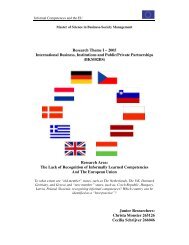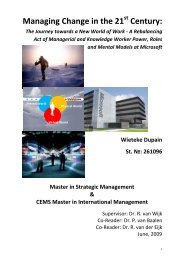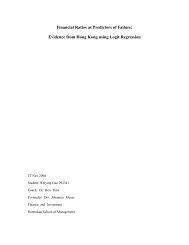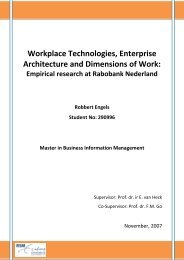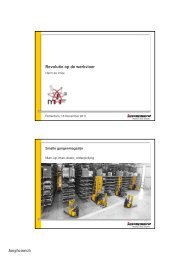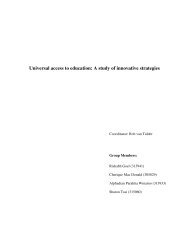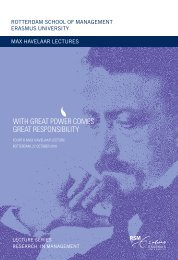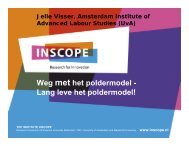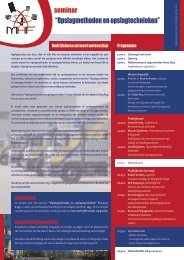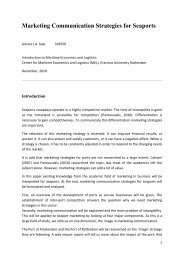here - ERIM - Erasmus Universiteit Rotterdam
here - ERIM - Erasmus Universiteit Rotterdam
here - ERIM - Erasmus Universiteit Rotterdam
You also want an ePaper? Increase the reach of your titles
YUMPU automatically turns print PDFs into web optimized ePapers that Google loves.
A validation Study of House of Quality key performance indicators<br />
in a more individualistic and consumption orientated culture. Third, the traditionally hierarchical<br />
structure and conservative culture of unions makes it difficult to benefit from new technologies.<br />
2. Modernization: Within the scenario of modernization, unions will use the opportunities of new<br />
information technologies to modernize traditional union functions. IT is used to establish a more<br />
positive and modern image for labor unions. For example websites can be uses as online information<br />
databases. Online services can be improved by providing not only commercial services but also<br />
online professional assistance and training. But new information technologies can also be used for<br />
targeting and recruiting new members like for example the so called e-generation; people who have<br />
grown up with technology.<br />
3. Democratization: The scenario of democratization moves further than the modernization scenario<br />
w<strong>here</strong> information technologies are used for modernization, online services or recruitment. The<br />
increasing speed and the volume of information obtainable via diverse computer mediated<br />
communications, offer members the ability to communicate their opinions on policy matters on a<br />
more frequent and direct base to a local, national and global audience. T<strong>here</strong>fore IT facilitates<br />
change towards both decentralized organizations and participation in the decision making of<br />
individuals. However, if not coordinated in an effective manner it may lead to activism that may take<br />
the form on the internet by the foundation and ‘wild-growth’ of independent online unions.<br />
2.2 New Media challenges<br />
Over the past decades transportation and information technology have transformed human<br />
interaction with space. (Go and Fenema 2003). Information technologies made it possible to connect<br />
people at different ends of the globe and accelerated the sharing of information (new facts) and<br />
concepts (Simon 1991). Simmel (1922) t<strong>here</strong>fore talked about “the metropolis” as a modern life<br />
compared with small town/rural life. The used citation of Simmel in the foreword of this thesis<br />
illustrates this idea.<br />
The result of technology developments can be presented in two models. First, people may be<br />
included in one or more spaces sequentially or in parallel. The different spaces in which people may<br />
be included are depicted Figure - 3. In this model the material space represents situations w<strong>here</strong><br />
artefacts and people exist together in the same context. Information space is the use of “network of<br />
networks” (i.e. Lievrouw & Livingstone, 2006). Mind spaces are connected when people and/or<br />
machines interact. Social spaces occur when people include themselves in multiple social contexts<br />
and relationships (Go & Fenema, 2003). In this context the forming of mind space and social space<br />
are faced with a shift from material spaces to information spaces. In theory a lot is written about<br />
23




